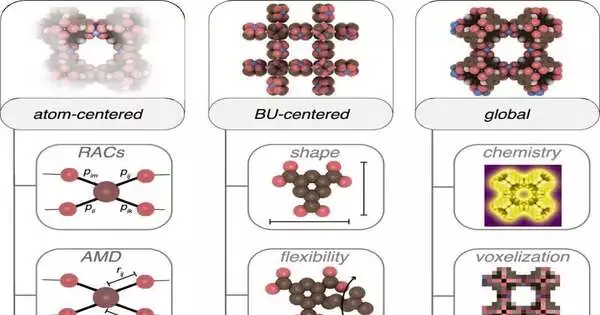An ecosystem of tools has been developed by a group of chemists and computer scientists from the University of California, the Swiss Federal Institute of Technology Lausanne, and the Institut des Sciences et Ingénierie Chimiques, Ecole Polytechnique, to improve the design of metal-organic frameworks based on machine learning.
Kevin Maik Jablonka, Andrew Rosen, Aditi Krishnapriyan, and Berend Smit coded tools to turn data into inputs for machine learning in their study, which was published in the journal ACS Central Science. The goal of their system was to improve machine-learning frameworks.
The science of designing and synthesizing porous crystalline materials with particular predefined structures and properties (building blocks) is referred to as “reticular chemistry.” Metal-organic frameworks (MOFs) are the names of these materials, which can be used for drug delivery, gas storage, separation, catalysis, and sensing.
Sadly, trial-and-error experiments remain the primary method for discovering and optimizing new MOFs, which is time-consuming and costly. A set of applications called Mofdscribe was created by some of the current team members to accelerate the development of reticular chemistry. In 2022, they made it available to the general public for use.
Numerous chemists have utilized Mofdscribe ever since to assist in the creation of distinct MOFs. However, the current group set out to develop a more useful system after realizing that Mofdscribe had some drawbacks.
In order to accomplish this, the researchers developed software that made it possible to combine high-throughput screening, data mining, machine learning, and computational modeling. They also solved a problem with test sets leaking data used to train machine-learning algorithms. They say that one of their goals was to make tools for analyzing datasets, which researchers don’t need right now but will probably need in the future. They suggest that this should make it easier to compare machine learning systems’ performance differences.
As a result, an “ecosystem” was created, which the team refers to as an environment where chemists could develop novel machine-learning strategies for the production of MOFs with desired properties and functions. They point out that it also makes it possible to identify novel reaction conditions and synthetic routes.
The research team also points out that the new ecosystem will make it easier for reticular chemistry researchers to share and reuse data and knowledge, which they believe will encourage innovation and collaboration.
More information: Kevin Maik Jablonka et al, An Ecosystem for Digital Reticular Chemistry, ACS Central Science (2023). DOI: 10.1021/acscentsci.2c01177





